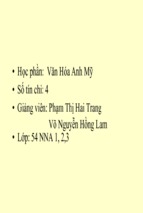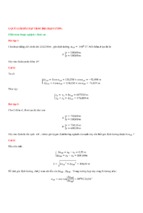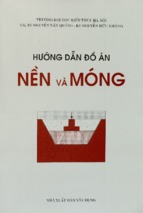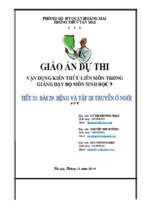Depth Map and 3D
Imaging Applications:
Algorithms and Technologies
Aamir Saeed Malik
Universiti Teknologi Petronas, Malaysia
Tae-Sun Choi
Gwangju Institute of Science and Technology, Korea
Humaira Nisar
Universiti Tunku Abdul Rahman, Perak, Malaysia
Managing Director:
Book Production Manager:
Development Manager:
Development Editor:
Acquisitions Editor:
Typesetters:
Print Coordinator:
Cover Design:
Lindsay Johnston
Sean Woznicki
Joel Gamon
Michael Killian
Erika Carter
Mackenzie Snader
Jamie Snavely
Nick Newcomer
Published in the United States of America by
Information Science Reference (an imprint of IGI Global)
701 E. Chocolate Avenue
Hershey PA 17033
Tel: 717-533-8845
Fax: 717-533-8661
E-mail:
[email protected]
Web site: http://www.igi-global.com
Copyright © 2012 by IGI Global. All rights reserved. No part of this publication may be reproduced, stored or distributed in
any form or by any means, electronic or mechanical, including photocopying, without written permission from the publisher.
Product or company names used in this set are for identification purposes only. Inclusion of the names of the products or
companies does not indicate a claim of ownership by IGI Global of the trademark or registered trademark.
Library of Congress Cataloging-in-Publication Data
Depth map and 3D imaging applications: algorithms and technologies / Aamir
Saeed Malik, Tae Sun Choi, and Humaira Nisar, editors.
p. cm.
Summary: “This book present various 3D algorithms developed in the recent
years to investigate the application of 3D methods in various domains,
including 3D imaging algorithms, 3D shape recovery, stereoscopic vision and
autostereoscopic vision, 3D vision for robotic applications, and 3D imaging
applications”-- Provided by publisher.
Includes bibliographical references and index.
ISBN 978-1-61350-326-3 (hardcover) -- ISBN 978-1-61350-327-0 (ebook) -- ISBN
978-1-61350-328-7 (print & perpetual access) 1. Algorithms. 2. Threedimensional imaging. I. Malik, Aamir Saeed, 1969- II. Choi, Tae Sun, 1952III. Nisar, Humaira, 1970- IV. Title: Depth map and three-D imaging
applications.
QA9.58.D47 2012
621.36’7015181--dc23
2011031955
British Cataloguing in Publication Data
A Cataloguing in Publication record for this book is available from the British Library.
All work contributed to this book is new, previously-unpublished material. The views expressed in this book are those of the
authors, but not necessarily of the publisher.
Editorial Advisory Board
Fabrice Meriaudeau, University of Bourgogne, France
Naeem Azeemi, COMSATS Institute of Information Technology, Pakistan
Kishore Pochiraju, Stevens Institute of Technology, USA
Martin Reczko, Synaptic Ltd., Greece
Iftikhar Ahmad, Nokia, Finland
Nidal Kamel, Universiti Teknologi Petronas, Malaysia
Umer Zeeshan Ijaz, University of Cambridge, UK
Asifullah Khan, Pakistan Institute of Engineering and Applied Sciences, Pakistan
List of Reviewers
Aamir Saeed Malik, Universiti Teknologi Petronas, Malaysia
Abdul Majid, Pakistan Institute of Engineering and Applied Sciences, Pakistan
Andreas F. Koschan, University of Tennessee, USA
Antonios Gasteratos, Democritus University of Thrace, Greece
Asifullah Khan, Pakistan Institute of Engineering and Applied Sciences, Pakistan
Aurelian Ovidius Trufasu, Politehnica University of Bucharest, Romania
Fabrice Meriaudeau, University of Bourgogne, France
Fakhreddine Ababsa, University of Evry Val d’Essonne, France
Hiroki Takada, University of Fukui, Japan
Humaira Nisar, Universiti Tunku Abdul Rahman, Perak, Malaysia
Ibrahima Faye, Universiti Teknologi Petronas, Malaysia
Iftikhar Ahmad, Nokia, Finland
Kishore Pochiraju, Stevens Institute of Technology, USA
Mannan Saeed, Gwangju Institute of Science & Technology, Republic of Korea
Martin Reczko, Synaptic Ltd., Greece
Mercedes Farjas, Universidad Politécnica de Madrid, Spain
Muzaffar Dajalov, Yeungnam University, Republic of Korea
Naeem Azeemi, COMSATS Institute of Information Technology, Pakistan
Nidal Kamel, Universiti Teknologi Petronas, Malaysia
Song Zhang, Iowa State University, USA
Tae-Seong Kim, Kyung Hee University, Republic of Korea
Tae-Sun Choi, Gwangju Institute of Science & Technology, Republic of Korea
Umer Zeeshan Ijaz, University of Cambridge, UK
Table of Contents
Foreword................................................................................................................................................ ix
Preface.................................................................................................................................................... xi
Acknowledgment.................................................................................................................................. xv
Chapter 1
Introduction to 3D Imaging..................................................................................................................... 1
Aamir Saeed Malik, Universiti Teknologi Petronas, Malaysia
Humaira Nisar, Universiti Tunku Abdul Rahman, Malaysia
Section 1
3D Imaging Methods
Chapter 2
Multi-View Stereo Reconstruction Technique....................................................................................... 10
Peng Song, Nanyang Technological University, Singapore
Xiaojun Wu, Harbin Institute of Technology Shenzhen, China
Chapter 3
Forward Projection for Use with Iterative Reconstruction.................................................................... 27
Raja Guedouar, Higher School of Health Sciences and Technics of Monastir, Tunisia
Boubaker Zarrad, Higher School of Health Sciences and Technics of Monastir, Tunisia
Chapter 4
Algorithms for 3D Map Segment Registration...................................................................................... 56
Hao Men, Stevens Institute of Technology, USA
Kishore Pochiraju, Stevens Institute of Technology, USA
Chapter 5
3D Shape Compression Using Holoimage............................................................................................ 87
Nikolaus Karpinsky, Iowa State University, USA
Song Zhang, Iowa State University, USA
Chapter 6
Restoration and Enhancement of Digitally Reconstructed Holographic Images................................. 105
Rajeev Srivastava, Banaras Hindu University, India
Chapter 7
High-Speed, High-Resolution 3D Imaging Using Projector Defocusing............................................ 121
Song Zhang, Iowa State University, USA
Yuanzheng Gong, Iowa State University, USA
Section 2
Shape From X: Algorithms & Techniques
Chapter 8
Three-Dimensional Scene Reconstruction: A Review of Approaches................................................. 142
Dimitrios Chrysostomou, Democritus University of Thrace, Greece
Antonios Gasteratos, Democritus University of Thrace, Greece
Chapter 9
Comparison of Focus Measures under the Influence of Various Factors Effecting their Performance.......163
Aamir Saeed Malik, Universiti Teknologi Petronas, Malaysia
Chapter 10
Image Focus Measure Based on Energy of High Frequency Components in S-Transform................ 189
Muhammad Tariq Mahmood, Korea University of Technology and Education, Korea
Tae-Sun Choi, Gwangju Institute of Science and Technology, Korea
Chapter 11
Combining Focus Measures for Three Dimensional Shape Estimation
Using Genetic Programming................................................................................................................ 209
Muhammad Tariq Mahmood, Korea University of Technology and Education, Korea
Tae-Sun Choi, Gwangju Institute of Science and Technology, Korea
Chapter 12
“Scanning from Heating” and “Shape from Fluorescence”: Two Non-Conventional
Imaging Systems for 3D Digitization of Transparent Objects............................................................. 229
Fabrice Mériaudeau, Université de Bourgogne, France
R. Rantoson, Université de Bourgogne, France
G. Eren, Université de Bourgogne, France
L. Sanchez-Sécades, Université de Bourgogne, France
O. Aubreton, Université de Bourgogne, France
A. Bajard, Université de Bourgogne, France
D. Fofi, Université de Bourgogne, France
I. Mohammed, Université de Bourgogne, France
O. Morel, Université de Bourgogne, France
C. Stolz, Université de Bourgogne, France
F. Truchetet, Université de Bourgogne, France
Section 3
Stereoscopy & Autostereoscopy
Chapter 13
Modular Stereo Vision: Model and Implementation........................................................................... 245
Ng Oon-Ee, Monash University Sunway Campus, Malaysia
Velappa Ganapathy, University of Malaya, Malaysia
S.G. Ponnambalam, Monash University Sunway Campus, Malaysia
Chapter 14
Stereoscopic Vision for Off-Road Intelligent Vehicles........................................................................ 268
Francisco Rovira-Más, Polytechnic University of Valencia, Spain
Chapter 15
Effectiveness of New Technology to Compose Stereoscopic Movies................................................. 286
Hiroki Takada, University of Fukui, Japan
Yasuyuki Matsuura, Nagoya University, Japan
Masaru Miyao, Nagoya University, Japan
Chapter 16
Low-Complexity Stereo Matching and Viewpoint Interpolation in Embedded
Consumer Applications........................................................................................................................ 307
Lu Zhang, IMEC, Belgium
Ke Zhang, IMEC, Belgium
Jiangbo Lu, Advanced Digital Sciences Center, Singapore
Tian-Sheuan Chang, National Chiao-Tung University, Taiwan
Gauthier Lafruit, IMEC, Belgium
Chapter 17
The Use of Watermarking in Stereo Imaging...................................................................................... 331
Dinu Coltuc, Valahia University Targoviste, Romania
Chapter 18
Introduction to Autostereoscopic Displays.......................................................................................... 346
Armin Grasnick, Sunny Ocean Studios Pte. Ltd., Singapore
Chapter 19
Multi-View Autostereoscopic Visualization using Bandwidth-Limited Channels.............................. 363
Svitlana Zinger, Eindhoven University of Technology, The Netherlands
Yannick Morvan, Philips Healthcare, The Netherlands
Daniel Ruijters, Philips Healthcare, The Netherlands
Luat Do, Eindhoven University of Technology, The Netherlands
Peter H. N. de With, Eindhoven University of Technology, The Netherlands &
Cyclomedia Technology B.V., The Netherlands
Section 4
Robotic Vision
Chapter 20
3D Scene Capture and Analysis for Intelligent Robotics..................................................................... 380
Ray Jarvis, Monash University, Australia
Chapter 21
Stereo Vision Depth Estimation Methods for Robotic Applications................................................... 397
Lazaros Nalpantidis, Royal Institute of Technology (KTH), Sweden
Antonios Gasteratos, Democritus University of Thrace, Greece
Chapter 22
Stereo-Vision-Based Fire Detection and Suppression Robot for Buildings........................................ 418
Chao-Ching Ho, National Yunlin University of Science and Technology, Taiwan
Section 5
3D Imaging Applications
Chapter 23
3D DMB Player and Its Reliable 3D Services in T-DMB Systems..................................................... 434
Cheolkon Jung, Xidian University, China
Licheng Jiao, Xidian University, China
Chapter 24
3D Scanner, State of the Art................................................................................................................. 451
Francesco Bellocchio, Università degli Studi di Milano, Italy
Stefano Ferrari, Università degli Studi di Milano, Italy
Chapter 25
3D Imaging for Mapping and Inspection Applications in Outdoor Environments.............................. 471
Sreenivas R. Sukumar, The University of Tennessee, USA
Andreas F. Koschan, The University of Tennessee, USA
Mongi A. Abidi, The University of Tennessee, USA
Chapter 26
3D Laser Scanner Techniques: A Novel Application for the Morphological
Study of Meteorite Impact Rocks........................................................................................................ 500
Mercedes Farjas, Universidad Politécnica de Madrid, Spain
Jesús Martinez-Frias, NASA Astrobiology Institute, Spain
Jose María Hierro, Universidad Politécnica de Madrid, Spain
Chapter 27
3D Camera Tracking for Mixed Reality using Multi-Sensors Technology......................................... 528
Fakhreddine Ababsa, University of Evry Val d’Essonne, France
Iman Maissa Zendjebil, University of Evry Val d’Essonne, France
Jean-Yves Didier, University of Evry Val d’Essonne, France
Chapter 28
Recovering 3-D Human Body Postures from Depth Maps and Its Application
in Human Activity Recognition........................................................................................................... 540
Nguyen Duc Thang, Kyung Hee University, Korea
Md. Zia Uddin, Kyung Hee University, Korea
Young-Koo Lee, Kyung Hee University, Korea
Sungyoung Lee, Kyung Hee University, Korea
Tae-Seong Kim, Kyung Hee University, Korea
Chapter 29
3D Face Recognition using an Adaptive Non-Uniform Face Mesh.................................................... 562
Wei Jen Chew, The University of Nottingham, Malaysia
Kah Phooi Seng, The University of Nottingham, Malaysia
Li-Minn Ang, The University of Nottingham, Malaysia
Chapter 30
Subject Independent Facial Expression Recognition from 3D Face Models
using Deformation Modeling............................................................................................................... 574
Ruchir Srivastava, National University of Singapore, Singapore
Shuicheng Yan, National University of Singapore, Singapore
Terence Sim, National University of Singapore, Singapore
Surendra Ranganath, Indian Institute of Technology, Gandhinagar, India
Chapter 31
3D Thumbnails for 3D Videos with Depth.......................................................................................... 596
Yeliz Yigit, Bilkent University, Turkey
S. Fatih Isler, Bilkent University, Turkey
Tolga Capin, Bilkent University, Turkey
About the Contributors..................................................................................................................... 609
Index.................................................................................................................................................... 625
ix
Foreword
Imaging is as old as human intelligence. Indeed, anthropologists identify the point of departure between
animal and human at the point where the creature felt the need to create an image. The creation of images in prehistoric times was a means of teaching hunting techniques, recording important events, and
communicating (Figure1). It is from those elementary images that hieroglyphs evolved and eventually
alphabets. Imaging has always been part of human culture. Its decorative nature was perhaps less important than its role in recording significant events, mainly for impressing the masses for the importance
and glory of its rich and powerful patrons. In the last 200 years or so, technology-based imaging started
to co-exist in parallel with manual imaging, restricting the role of the latter mainly to art. Technology
based imaging is nowadays very much a major part of our everyday life, through its medical applications, routine surveillance, or entertainment. However, imaging has always been haunted by the need to
depict a 3D world on a 2D medium. This has been a problem that pertains to paintings throughout the
millennia: from the ancient Egyptians, who were painting full eyes even when seen sideways, to PiFigure 1.
x
casso and the cubists, who tried to capture all 3D aspects of the depicted object on a 2D canvas, imaging
in 3D has been the holy grail of imaging. Modern technology has at last matured enough to allow us to
record the 3D world as such, with an enormous range of applications: from medicine and cave technology for oil exploration, to entertainment and the 3D television. This book is dedicated exactly to these
modern technologies, which fascinate and excite. Enjoy it!
Maria Petrou
Informatics and Telematics Institute, CERTH, Greece & Imperial College London, UK
Maria Petrou studied Physics at the Aristotle University of Thessaloniki, Greece, Applied Mathematics in Cambridge, UK,
and obtained her PhD and DSc degrees both from Cambridge University in Astronomy and Engineering, respectively. She is
the Director of the Informatics and Telematics Institute of CERTH, Thessaloniki, Greece, and the Chair of Signal Processing
at Imperial College London, UK. She has co-authored two books, “Image Processing, the fundamentals” and “Image Processing dealing with texture”, in 1999 (second edition 2010) and 2006, respectively, and co-edited the book “Next generation
artificial vision systems, reverse engineering the human visual system.” She has published more than 350 scientific articles on
astronomy, computer vision, image processing and pattern recognition. She is a Fellow of the Royal Academy of Engineering.
xi
Preface
This book has three editors, and all of us are involved in image processing and computer vision research.
We have contributed to the 3D imaging research, especially in the field of passive optical 3D shape
recovery methods. Over the last decade, significant progress had been made in 3D imaging research. As
a result, 3D imaging methods and techniques are being employed for various applications. The objective
of this book is to present various 3D algorithms developed in the recent years and to investigate the
application of 3D methods in various domains.
This book is divided into five sections. Section 1 presents various 3D imaging algorithms that are
developed in recent years. It covers quite a variety of research fields including 3D mapping, holography, and 3D shape compression. Six chapters are included in Section 1. Section 2 deals with 3D shape
recovery methods that fall in the optical passive as well as active domains. The topics covered in this
section include shape from focus, shape from heating, and shape from fluorescence. Section 2 includes
5 chapters.
Section 3 is dedicated to stereoscopic vision and autostereoscopic vision. The dedication of a whole
section to stereoscopic and autostereoscopic vision emphasizes the importance of these two technologies.
Seven chapters are included in this section. Section 4 discusses 3D vision for robotic applications. The
topics included in this section are 3D scene analysis for intelligent robotics and usage of stereo vision for
various applications including fire detection and suppression in buildings. This section has three chapters.
Finally, Section 5 includes a variety of 3D imaging applications. The applications included in this
section are 3D DMB player, 3D scanner, 3D mapping, morphological study of meteorite impact rocks,
3D tracking, 3D human body posture estimation, 3D face recognition, and 3D thumbnails for 3D videos.
A total of nine chapters are included on several of the above mentioned applications in this section.
There are 31 chapters in this book. Chapter 1 is not included in any of the sections as it provides an
introduction to 3D imaging. Chapter 1 briefly discusses the classification for 3D imaging. It provides
an overview of the 3D consumer imaging products that are available commercially. It also discusses the
future of 3D consumer electronics.
SECTION 1
Chapter 2 to Chapter 7 are included in this section. Chapter 2 discusses multi-view stereo reconstruction
as well as shape from silhouette method. Multiple images are used with multiple views for 3D reconstruction. This chapter can be included in both Section 2 and Section 3 since Section 2 deals with methods
like shape from silhouette while Section 3 covers stereovision. However, we decided to put it as the
xii
first chapter of section I because it presents an algorithm dealing with 3D shape reconstruction and also
because we want to emphasize the importance of these two topics at the very beginning of this book.
Chapter 3 deals with the iterative reconstruction method that can be used in various medical imaging
methods like X-ray, Computed Tomography, Positron Emission Tomography, Single Photon Emission
Computed Tomography, Dose-calculation in Radiotherapy, and 3D-display Volume-rendering. This
chapter is included in the book to emphasize on the importance of 3D transmissive methods that have
greatly influenced our present day life style by improving the healthcare services.
Chapter 4 provides methods for generating 3D maps of the environment surrounding us. These maps
are especially useful for robot navigation. This chapter especially discusses 3D map registration in detail.
Chapter 5 emphasizes the importance of compression for data storage and transmission for large
chunks of 3D data. It describes a 3D image compression method that could reduce the data storage and
transmission requirements.
Chapter 6 addresses holographic images. The future of true 3D lies in the holographic imaging technology. The holographic images are marred with noise and low quality. Hence, restoration and enhancement are very important for holographic images. This chapter summarizes related issues and provides
solution for the restoration and enhancement of the holographic images.
Chapter 7 is the last chapter in section I. This chapter deals with an active optical 3D shape recovery
method. For active fringe patterns projection, off-the-shelf projector is used in order to reduce the cost
of the system.
SECTION 2
Chapter 8 to Chapter 12 are included in Section 2. Chapter 8 gives a very good introduction of the 3D
shape recovery approaches. It includes the geometric approaches, photometric methods, and the real
aperture techniques. Details are provided for various methods and techniques falling under one of the
three approaches.
Chapter 9 discusses the focus measures in detail. A total of eleven focus measures are discussed, and
they are categorized under four major classes. A very detailed comparison is provided for the eleven
focus measures. The performance comparison is provided with respect to several types of noise, varying
illumination and various types of textures.
Chapter 10 uses S-Transform for developing a focus measure method. High frequency components
in the S-transform domain are targeted by the developed focus measure. The focus measure is used as
a shape from focus technique to recover the 3D shape.
Chapter 11 uses genetic programming for developing a focus measure. An optimal composite depth
function is developed, which utilizes multiple focus measures to get the optimized depth map for 3D
shape recovery.
Chapter 12 provides two methods for recovering 3D shape of the transparent objects. Using normal
optical methods, the 3D shape of transparent objects cannot be recovered accurately and precisely. This
chapter discusses shape from heating and shape from fluorescence techniques to recover the 3D shape.
These are new methods and have been introduced recently.
xiii
SECTION 3
Chapter 13 to chapter 19 are included in Section 3. Chapter 13 to Chapter 17 are related to stereoscopic
vision, while the last two chapters in this section are on autostereoscopic vision. Although these two topics
can be placed under Section 2, they have been placed in a separate section because of their importance
in terms of consumer electronics.
Chapter 13 discusses a stereoscopic algorithm which treats the stereovision as modular approach.
Hence, the stereovision algorithm can be divided into various stages and each of the stage can be implemented individually.
Chapter 14 and Chapter 15 discuss applications of the stereovision. Off road intelligent vehicle navigation using stereovision in the agricultural environment is dealt in chapter 14 while chapter 15 discusses
visually induced motion sickness (VIMS) that is associated with stereoscopic movies.
Chapter 16 provides details of viewpoint interpolation methods that are used for synthesizing the
in-between views from few views that are captured by few fixed cameras. Chapter 17 presents a reversible watermarking based algorithm to deal with the high costs of memory, transmission bandwidth and
computational complexity for 3D images.
Chapter 18 and Chapter 19 deal with autostereoscopic vision. Stereoscopic displays require 3D glasses
to view in 3D while the autostereoscopic displays do not require any 3D glasses. Chapter 18 introduces
the basic concepts of autostereoscopic displays and discusses several of its technologies. Chapter 19
addresses the very important issue of bandwidth for high resolution multi-view autostereoscopic data.
SECTION 4
Chapter 20 to Chapter 22 are included in section IV. This is the shortest section in this book. Although,
all the three chapters in this section could easily be included in Section 3 but we decided to allocate a
separate section to emphasize the topic of robotic vision.
Chapter 20 is an invited chapter. It deals with intelligent robotics by capturing and analysing a scene
in 3D. Real time processing is important for robotic applications and hence this chapter discusses limitations for the analysis of 3D data in real time. This chapter provides very good description of various
technologies that address the limitation issues for real time processing.
Chapter 21 and Chapter 22 use the stereovision for robotic applications. Chapter 21 discusses the
autonomous operation of robots in real working environments while chapter 22 deals with the specific
application of fire detection and suppression in the buildings.
SECTION 5
Chapter 23 to Chapter 31 are included in this section. Nine chapters deal with nine different 3D applications. It is the last section of the book. However, some of the applications dealing with stereovision,
robotics and compression are also discussed in earlier sections. We placed them in those sections because
we think that they are more relevant to the topics in those sections.
Chapter 23 discusses a 3D DMB player. DMB stands for digital multimedia broadcasting, and it is
used for terrestrial-DMB (T-DMB) systems. The chapter also introduces an approximation method to
xiv
create auto-stereoscopic images in the 3D DMB player. Hence, this chapter is also related to section III
where autostereoscopic vision is discussed.
Chapter 24 presents a detailed overview of the 3D scanning technologies. Comparison of several 3D
scanning methods is provided based on accuracy, speed, and the applicability of the scanning technology.
Chapter 25 deals with 3D mapping in outdoor environments, while chapter 26 presents 3D scanning
method to study morphology of a meteorite rock. For 3D mapping, examples are taken from pavement
runway inspection and urban mapping. For 3D scanning, meteorite rock is selected from the Karikkoselkä impact crater (Finland).
Chapter 27 discusses 3D tracking for mixed reality. 3D tracking is one of the active research areas
in 3D imaging. This chapter addresses 3D tracking in mixed reality scenario. Mixed reality deals with
virtual objects in real scenes. It is a very important topic with applications in medical, teaching, and
gaming professions. Multi-sensor fusion methods for mixed reality with 3D camera tracking are discussed in this chapter.
Chapter 28 uses stereovision for the reconstruction of 3D human body posture that is further utilized
in human activity recognition. Human activity recognition is of vital importance for visual surveillance
applications. Hence, interest in human activity recognition research has increased manifolds in the
recent years.
Chapter 29 deals with 3D face recognition, while chapter 30 discusses 3D face expression recognition. In Chapter 29, a method for 3D face recognition is presented based on adaptive non-uniform
meshes. In chapter 30, a feature extraction method is discussed that does not require any neutral face
for the test object.
Chapter 31 is the last chapter of this section, as well as the last chapter of the book. Chapter 31
introduces a thumbnail format for 3D videos with depth. A framework is presented in the chapter that
generates 3D thumbnails from layered depth video (LDV) and video plus depth (V+D).
FINAL WORDS
The work on this book started in November 2009 and it has taken about one and a half years to complete
it. All the chapters in this book went through multiple reviews by the professionals in the field of 3D
imaging and 3D vision. All the chapters had been revised based on the comments of multiple reviewers
by the respective authors of the chapters. Contributors for the book chapters come from all over the
world, i.e., Japan, Republic of Korea, China, Australia, Malaysia, Taiwan, Singapore, India, Tunisia,
Turkey, Greece, France, Spain, Belgium, Romania, Netherlands, Italy, and United States. This indicates
that this book covers a topic of vital importance for our time, and it seems that it will remain so at least
for this decade.
3D imaging is a vast field and it is not possible to cover everything in one book. 3D research is ever
expanding and the 3D research work will go on with the advent of new applications. This book presents
state of the art research in selected topics. We hope that the topics presented in this book attract the attention of researchers in various research domains who may be able to find solutions to their problems
in 3D imaging research. We further hope that this book can serve as a motivation for students as well as
researchers who may pursue and contribute to the 3D imaging research.
Aamir Saeed Malik, Tae-Sun Choi, Humaira Nisar
xv
Acknowledgment
The editors would like to thank all members of the Editorial Advisory Board. Their contributions and
suggestions have made a positive impact on this book. Specifically, due recognition goes to Fabrice
Meriaudeau of University of Bourgogne, Naeem Azeemi of COMSATS Institute of Information Technology, Kishore Pochiraju of Stevens Institute of Technology, Martin Reczko of Synaptic Ltd., Iftikhar
Ahmad of Nokia, Nidal Kamel of Universiti Teknologi Petronas, Umer Zeeshan Ijaz of University of
Cambridge, and Asifullah Khan of Pakistan Institute of Engineering and Applied Sciences.
The editors would also like to acknowledge all the reviewers for providing their professional support
to this book through their valuable and constructive reviews. Each chapter in the book went through
multiple reviews, and the editors appreciate the time and the technical support provided by the reviewers in this regard. The reviewers include Abdul Majid of Pakistan Institute of Engineering and Applied
Sciences, Andreas F. Koschan of University of Tennessee, Antonios Gasteratos of Democritus University
of Thrace, Aurelian OvidiusTrufasu of Politehnica University of Bucharest, Fakhreddine Ababsa of
University of Evry Val d’Essonne, Hiroki Takada of University of Fukui, Ibrahima Faye of Universiti
Teknologi Petronas, Mannan Saeed of Gwangju Institute of Science and Technology, Mercedes Farjas
of Universidad Politécnica de Madrid, Muzaffar Dajalov of Yeungnam University, Song Zhang of Iowa
State University, and Tae-Seong Kim of Kyung Hee University.
The editors acknowledge support of Department of Electrical and Electronic Engineering at Universiti
Teknologi Petronas, Bio Imaging Research Center at Gwangju Institute of Science and Technology, Department of Electronic Engineering, Faculty of Engineering and Green Technology at Universiti Tunku
Abdul Rahman, Perak, Malaysia, and Center for Intelligent Signal and Imaging Research at Universiti
Teknologi Petronas.
Finally the editors express their appreciation for IGI Global who gave us the opportunity for editing
this book. We would like to acknowledge IGI Global and its entire staff for providing professional support during all the phases of book development. Specifically, we would like to mention Michael Killian
(Assistant Development Editor), who provided us assistance during all the phases in the preparation of
this book.
Aamir Saeed Malik, Tae-Sun Choi, Humaira Nisar
1
Chapter 1
Introduction to 3D Imaging
Aamir Saeed Malik
Universiti Teknologi Petronas, Malaysia
Humaira Nisar
Universiti Tunku Abdul Rahman, Malaysia
ABSTRACT
With the advent of 3D consumer products in the electronics market, 3D imaging is all set to take off. Last
decade had seen a lot of research activity with respect to 3D imaging. It will not be wrong to say that
this decade will be the decade of 3D imaging. This chapter briefly introduces 3D imaging with respect
to various 3D consumer products and 3D standardization activity. It also discusses the challenges and
the future of 3D imaging.
INTRODUCTION
3D imaging is not a new research area. Researchers are working with 3D data for the last
few decades. Even 3D movies were introduced
using the cardboard colored glasses. However,
the consumers did not accept the results of that
3D research because of low quality visualization
of 3D data. The researchers were limited by the
hardware resources like processing speed and
memory issues. But with the advent of multicore
machines, specialized graphics processors and
large memory modules, 3D imaging research is
DOI: 10.4018/978-1-61350-326-3.ch001
picking up the pace. The result is the advent of
various 3D consumer products.
3D imaging methods can be broadly divided
into three categories, namely, contact, reflective
and transmissive methods. The contact methods,
as the name implies, recover the 3D shape of
the object by having physical contact with the
object. These methods are generally quite slow as
they scan every pixel physically and they might
modify or damage the object. Hence, they cannot
be used for valuable objects like jewellery, historical artifacts etc. However, they provide very
accurate and precise results. An example is the
CMM (coordinate measuring machine) which is a
contact 3D scanner (Bosch 1995). Such scanners
are common in manufacturing and they are very
Copyright © 2012, IGI Global. Copying or distributing in print or electronic forms without written permission of IGI Global is prohibited.
Introduction to 3D Imaging
precise. Another application of contact scanners
is in the animation industry where they are used
to digitize clay models.
On the other hand, reflective and transmissive
methods do not come in physical contact with
the object. The transmissive methods are very
popular in the medical arena and include methods
like CT (Computed Tomography) scanning, MRI
(Magnetic Resonance Imaging) scanning and
PET (Positron Emission Tomography) scanning
(Cabeza, 2006). CT scanners are now installed
in almost all the major hospitals in every country and they use X-rays for scanning. MRI and
PET are more expensive then CT and are not as
frequently used as CT scanners, especially in the
third world countries. However, because of its
usefulness MRI has become quite popular and is
now available at major hospitals in third world
countries. These technologies have revolutionized
the medical profession and they help in accurate
diagnosis of the diseases at an early stage. Apart
from the medical profession, these 3D scanning
technologies are used for non-destructive testing and 3D reconstruction for metals, minerals,
polymers etc.
The reflective methods are based either on the
optical or the non-optical sources. For non-optical
based methods, radar, sonar and ultrasound are
good examples which are now widely accepted
and mature technologies. They are used by rescue
services, medical professionals, environmentalists, defense personnel etc. They have wide range
of applications and their cost varies from few
hundred to hundred of thousands of dollars.
The optical based reflective methods are
the ones that have direct effect on the everyday
consumer. These methods are the basis for commercialization of consumer products including 3D
TV, 3D monitors, 3D cameras, 3D printers, 3D
disc players, 3D computers, 3D games, 3D mobile
phones etc. The optical based reflective methods
can be active or passive. Active methods use
projected lights, projected texture and patterns for
acquiring 3D depth data. Passive methods utilize
2
depth cues like focus, defocus, texture, motion,
stereo, shading etc to acquire 3D depth data. Passive methods are also used in conjunction with
active methods for better accuracy and precision.
3D TELEVISION
We start with the introduction of 3D TV because
it is the motivation for most of the other 3D consumer technologies. The first version of the TV
was black-and-white TV. Although, there were
multiple gray levels associated with it but the name
associated with it was black-and-white TV. The
first major transition was from black-and-white
TV to color TV. It was a big revolution when that
transition occurred. The earlier color TVs were
analog. Then, digital color TVs were introduced
followed by transition from standard resolution
to high definition (HD) resolution of the images.
However, the era of 2D HDTV appears to be
short because we are now witnessing the advent
of 3D HDTV (Wikipedia HDTV). These, 3D
HDTV are based on the stereoscopic technology
and hence are known as stereoscopic 3D TV or
S3D TV. Since, they also support high definition
resolution; hence, they can be called S3D HDTV.
All the major TV manufacturers have introduced
S3D HDTV in the consumer market. They include
various models from leading manufacturers like
Sony, Panasonic, Mitsubishi, Samsung, LG, Philips, Sharp, Hitachi, Toshiba and JVC.
S3D HDTV can be switched between the 2D
and 3D imaging modes hence maintaining the
downward compatibility with 2D images and
videos. Additionally, they provide software that
can artificially shift the 2D images and videos
to produce the stereo effect and hence the TV
programs can be watched in 3D. However, the
quality still needs to be improved. At this moment,
the best 3D perception is achieved by the images
and videos that are produced in 3D. As mentioned
above, these products are based on stereovision.
Introduction to 3D Imaging
Hence, they require the usage of 3D glasses for
watching in 3D.
3D MONITORS AND PHOTO FRAMES
In addition to S3D HDTV, 3D monitors are also
available based on the same stereoscopic technology (Lipton 2002, Mcallistor 2002). Hence, they
are available with 3D glasses. The 3D glasses are
discussed in detail in the next section. 3D photo
frames are now also being sold in the electronics
market. However, they are based on stereoscopic
vision with 3D glasses as well as on autostereoscopic vision technology which does not require
glasses. At this moment in time, autostereoscopic
displays are only available in small sizes and
they are restricted because of the viewing angle
in large sizes.
3D GLASSES
S3D HDTV relies on stereovision. In stereovision,
separate images are presented to each of our eye,
i.e., left and right eye. The images of the same
scene are shifted similar to what our left and right
eye see. As a result, the brain combines the two
separate shifted images of the same scene and
creates the illusion of the third dimension. The
images are presented at a very high refresh rate
and hence the two separate images are visualized
by our eyes almost at the same time. Our brain
cannot tell the difference of the time delay between
the two images and they appear to be received by
our eyes at the same time. The concept is similar
to video where static images are presented one
after the other at a very high rate and hence our
brain visualizes them as continuous.
For separate images to be presented to our left
and right eye, special glasses are required. These
glasses had come to be known as 3D glasses. In
early days, cardboard glasses were used. These
cardboard glasses had different color for each of
the lens with one being magenta or red and the
other being blue or green. On the 3D display system, two images were shown on the screen with
one is red color and the other in blue color. The
lens with the red color filter absorbed red color
and allowed blue image to pass through while the
lens with the blue filter allowed the red image
to enter the eye. Hence, one eye looked at the
red colored image while the other eye watched
the blue colored image. The brain received two
images and hence 3D image created. However,
two separate images were based on two separate
colors. Therefore, true color movie is not possible
with this technique. So, the image quality of early
3D movies was quite low.
Current 3D Glasses Technology
The current 3D glasses can be categorized into
two classes: active shutter glasses and polarized
glasses. Samsung, Panasonic, Sony and LG use
the active shutter glasses. High refresh rate is
used so that two images can be projected on the
TV alternately; one image for the right eye and
one for the left eye. Generally, the refresh rate
is 120 hertz for one image and 240 hertz for
both the images. The shutters on the 3D glasses
open and close corresponding to the projection
of images on the TV. There is a sensor between
the lenses on the 3D glasses that connect with
the TV in order to control the shutter on each of
the lens. The brain received two images at very
high refresh rate and hence it combines them to
achieve the 3D effect. By looking away from the
TV, one may see the opening and closing of the
lenses and hence it might cause irritation for some
viewers. The active shutter glasses are expensive
compared to polarized glasses.
JVC uses polarized glasses to separate the
images for the right eye and the left eye. The
famous movie, Avatar, was shown in US with the
polarized glasses. These glasses are very cheap
compared to the active shutter glasses. Two images
of the scene, each with a different polarization, are
3




















